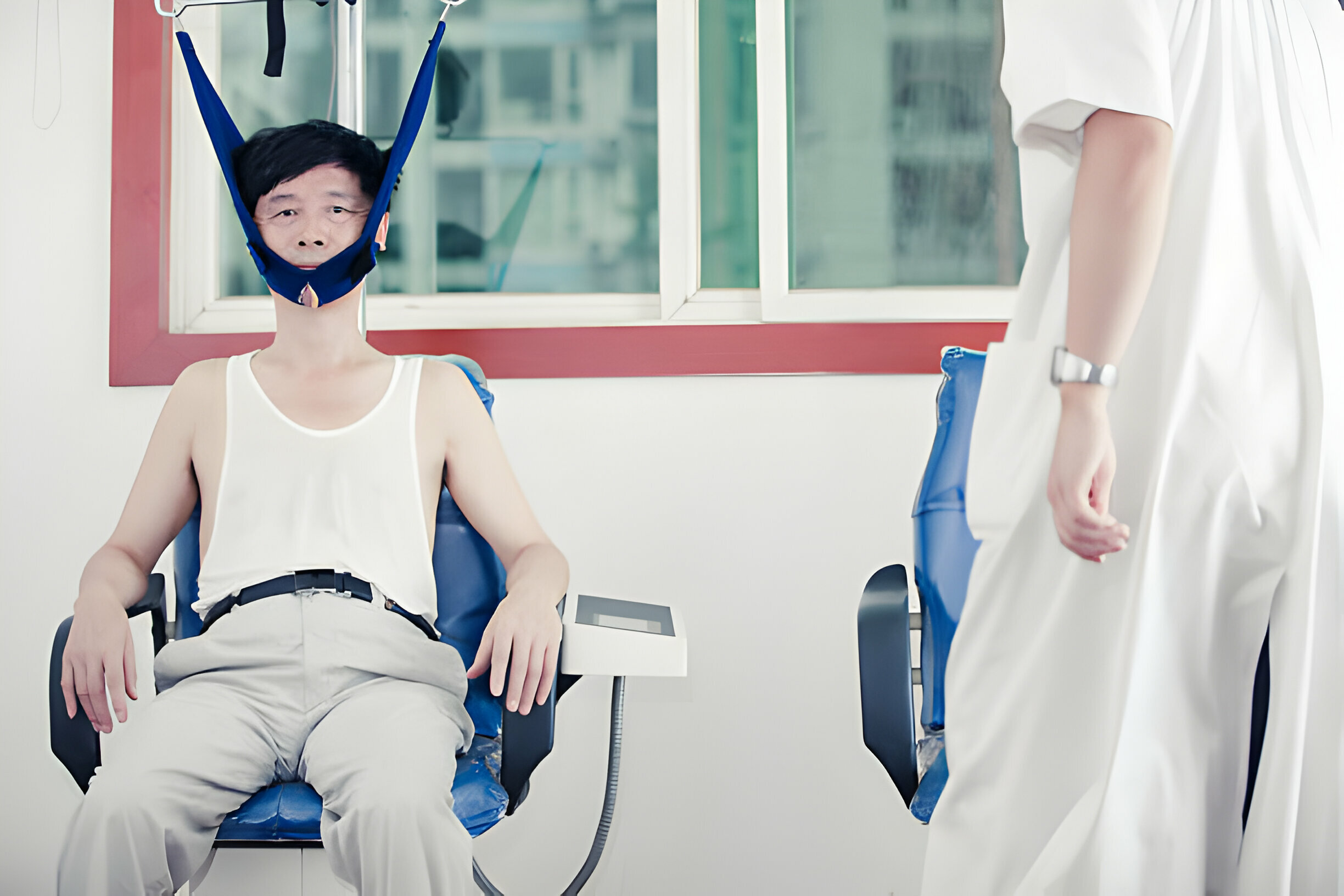Are you curious about what traction in chiropractic is and how it can benefit you? You might be thinking, “Is this technique really effective?” Well, let us assure you that chiropractic traction is a widely accepted method for treating spinal, muscle, and skeletal pain. By stretching your spine and relieving neural pressure, traction can provide lasting relief from conditions like degenerative disc disease and arthritis. In this article, we will explore the definition of traction in chiropractic, its benefits for spinal health, different types of traction, who can benefit from it, safety considerations, and more.
The Definition of Traction in Chiropractic
Traction in chiropractic is a technique that stretches your spine and relieves neural pressure. It has several benefits, including reducing pain caused by herniated or bulging discs and disc degenerative disorders. Traction can also help with pinched nerves, joint injuries, and muscle disorders. The effectiveness of traction varies from patient to patient, but it has been proven to provide short-term pain relief for those with specific conditions. However, not everyone is suitable for traction therapy. Patients with serious bone conditions like osteoporosis or spinal fractures should avoid traction. Precautions should also be taken for patients with heart disease or spinal cord diseases. It’s important to integrate traction with other treatments as well, such as heat therapy or massage, to enhance its effects on relieving pain and improving overall wellness.
How Traction Benefits Spinal Health
Using a combination of stretching and massage techniques, chiropractic care can provide relief for spinal issues and help improve overall spinal health. Chiropractic traction specifically benefits spinal health by promoting spinal alignment, muscle relaxation, disc decompression, nerve root relief, and mobility improvement. Through the application of gentle pressure and tension, manual traction stretches the muscles and skeleton to promote proper alignment of the spine. Mechanical traction provides more force and can be combined with heat, vibration, and massage to further enhance these benefits. By relieving pressure on the discs and nerves, traction helps decompress the spine and alleviate pain. Additionally, it improves blood flow to the affected areas, facilitating healing and increasing mobility. Overall, chiropractic traction is an effective approach to enhancing spinal health and addressing various musculoskeletal issues.
Different Types of Traction in Chiropractic
Mechanical traction, which utilizes motorized pulleys with adjustable tension settings, is one type of traction used in chiropractic. This type of traction involves the use of specific devices to apply controlled force and stretch the spine. Here are three examples of traction techniques and devices commonly used in chiropractic:
- Traction tables: These specialized tables have adjustable settings that allow for precise control over the amount of force applied during treatment. They provide a comfortable surface for patients to lie on while their spine is gently stretched.
- Home traction units: These portable devices are designed for patients to use at home under the guidance of their chiropractor. They usually consist of a harness or straps that attach to a doorframe or other stable object, allowing the patient to stretch their spine themselves.
- Manual traction: This technique involves the chiropractor using their hands to apply gentle pressure and tension to stretch the muscles and skeleton.
Traction techniques can be highly effective for relieving pain and improving spinal health in many cases. However, it’s important to consider any contraindications before undergoing this treatment, as certain conditions may make traction unsuitable or potentially harmful. The outcomes of traction therapy can vary depending on individual factors and the specific condition being treated.
Who Can Benefit From Traction Therapy
Patients with spinal issues, muscle spasms, and minor injuries can experience short-term pain relief through traction therapy. Traction techniques for spinal conditions involve stretching the spine to relieve neural pressure and realign abnormalities. This therapy is also beneficial for joint pain, as traction can help reduce irritation caused by conditions like osteoarthritis. Additionally, traction provides benefits for muscle disorders by stretching and lengthening muscles along the spinal column. It also helps alleviate nerve compression by decompressing discs and reducing pressure on nerve roots. The best part is that traction is a non-surgical treatment option, offering patients an alternative to invasive procedures. So if you’re looking for short-term pain relief without going under the knife, traction therapy may be worth considering.
Safety Considerations for Traction in Chiropractic
Safety considerations should be taken into account when implementing traction therapy in order to ensure the well-being of individuals seeking non-surgical pain relief. When considering traction, it is important to assess patient eligibility and take necessary precautions to prevent any potential risks. Here are three safety considerations to keep in mind:
- Patient Eligibility: Before starting traction therapy, it is crucial to evaluate the patient’s medical history, current health conditions, and any contraindications for traction. This helps determine if they are suitable candidates for this treatment.
- Traction Techniques: Different traction techniques may have varying levels of force and intensity. It is essential to select the appropriate technique based on the individual’s needs and preferences, ensuring that it aligns with their specific condition.
- Long-Term Effectiveness: Monitoring the therapeutic benefits and long-term effectiveness of traction therapy is vital. Regular evaluations can help track progress, make any necessary adjustments, and ensure that the treatment continues to provide optimal results.
The Role of Traction in Pain Relief and Recovery
The role of traction in pain relief and recovery can be significant, as it helps stretch the spine, decompress discs, and reduce pressure on nerve roots. Traction therapy is effective in providing relief for chronic pain management and plays a vital role in rehabilitation. It has a positive impact on mobility, especially for individuals recovering from sports injuries. By stretching the spine and decompressing discs, traction helps to alleviate pain caused by conditions such as herniated or bulging discs. The table below highlights the benefits of traction therapy:
| Benefits of Traction Therapy |
|---|
| Reduces pressure on nerve roots |
| Promotes spinal alignment |
| Increases flexibility and range of motion |
| Improves blood flow to affected areas |
Traction therapy not only provides short-term pain relief but also aids in long-term recovery by addressing the root cause of the pain. Whether used as part of a comprehensive treatment plan or as standalone therapy, traction can significantly contribute to pain management and overall well-being.
Combining Chiropractic Care With Traction Therapy
If you’re looking to enhance your chiropractic care, consider combining it with traction therapy for optimal results. By incorporating traction into your treatment plan, you can improve spinal alignment and accelerate your recovery from muscle disorders. Here’s how combining chiropractic techniques with traction therapy can benefit you:
- Improved Spinal Alignment: Traction therapy helps stretch and lengthen muscles and ligaments along the spinal column, promoting proper alignment and reducing pressure on nerve roots.
- Enhanced Rehabilitation Programs: Traction can be a valuable addition to rehabilitation programs for muscle disorders. It mobilizes the spinal column, increases blood flow to inflamed areas, and provides relief from pain associated with these conditions.
- Non-Surgical Treatment Option: Combining chiropractic care with traction therapy offers a non-surgical approach to treating muscle disorders. It allows you to avoid invasive procedures while still achieving effective pain relief and improved functionality.
The Future of Traction in Chiropractic
One exciting aspect of the future is the potential advancements and innovations in traction therapy within the field of chiropractic. Technological advancements in traction therapy are constantly being made, allowing for more precise and targeted treatments. Research and evidence supporting the effectiveness of traction continue to grow, providing chiropractors with a solid foundation for incorporating this technique into their practices. Integrating traction with other chiropractic techniques can enhance overall patient outcomes by addressing multiple aspects of spinal health. Traction is also proving to be valuable in sports injury rehabilitation, helping athletes recover faster and regain optimal performance. Additionally, traction can be used as a preventive measure for spinal health, ensuring that individuals maintain proper alignment and prevent future injuries or conditions. The future of traction in chiropractic holds great promise for improving patient care and outcomes.






